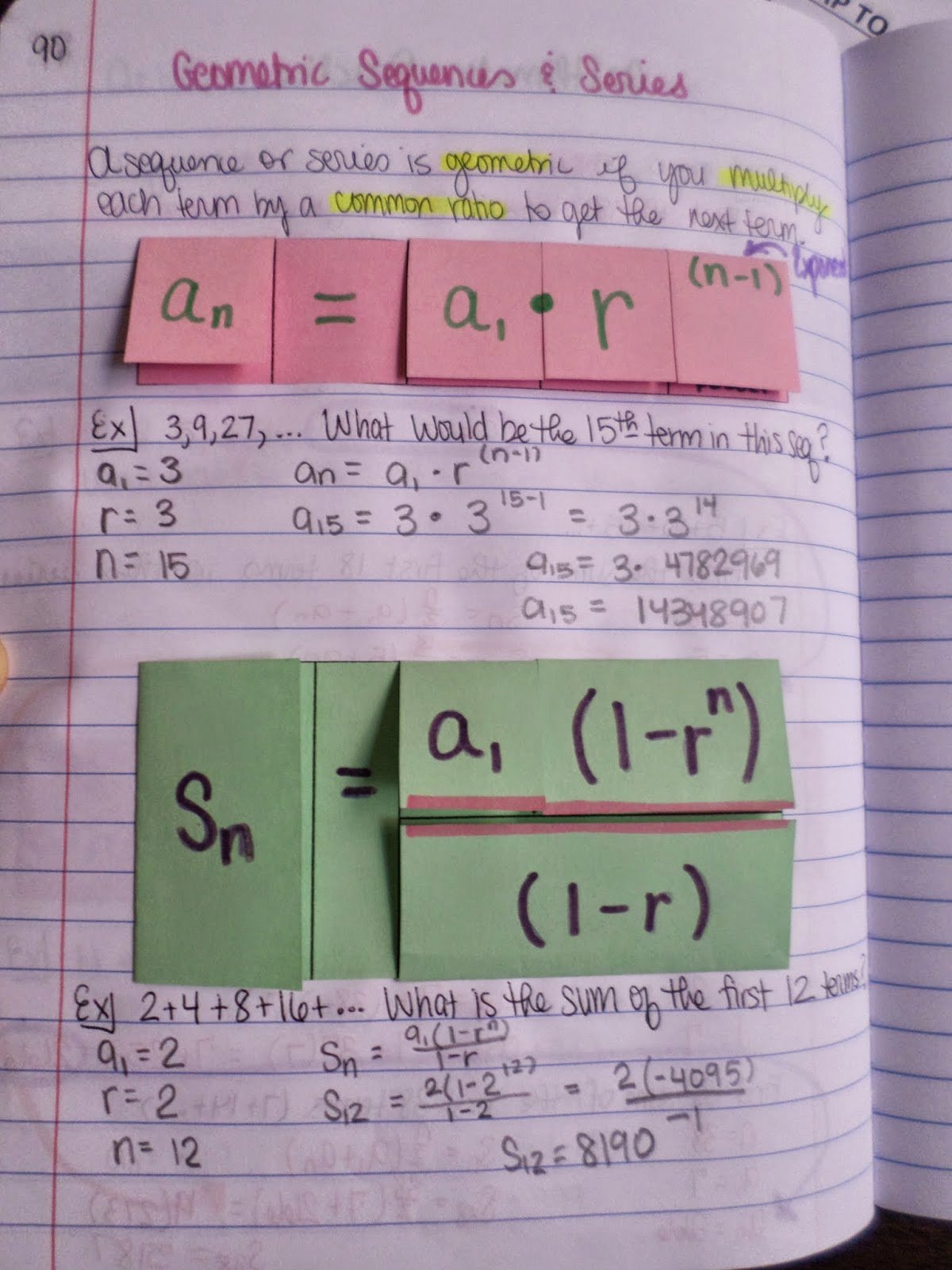
Specifically, I required them to find the 8th and 10th term in each sequence. Intended for classroom and personal use ONLY. I created this geometric sequences practice sheet to give my Algebra 1 students practice writing rules for geometric sequences and using that rule to find various terms in the sequence. Failure to comply is a copyright infringement and a violation of the Digital Millennium Copyright Act (DMCA). This product may not be distributed or displayed digitally for public view. Beginning with an invitation to describe sequences informally, students progress to writing terms of sequences arising from mathematical situations, using. Copying for more than one teacher, classroom, department, school, or school system is prohibited. For example, the Fibonacci sequence is defined. This product is to be used by the original downloader only. Recognize that sequences are functions, sometimes defined recursively, whose domain is a subset of the integers.


In the last part of the unit, students use sequences to model several situations represented in different ways. Since the ratio between each term and the one that precedes it is 4 for all the terms, the sequence is geometric, and the common ratio r4. Use standard deviation to identify outliers. Explore one-variable statistics and use new vocabulary to describe the shape of distributions. 84 4 32 Example 1 (Continued): Step 2: Now, compare the ratios. This final theme in Algebra 1 lays the groundwork for statistical analysis with practice on dot plots, histograms, and box plots. Throughout the unit, students learn that sequences are functions and that geometric and arithmetic sequences are examples of the exponential and linear functions they learned about in previous courses, defined on a subset of the integers. Step 1: First, calculate the ratios between each term and the one that precedes it. They progress to using function notation to define sequences recursively and then explicitly for the \(n^\) term. Each element in the sequence is called a term.

Beginning with an invitation to describe sequences informally, students progress to writing terms of sequences arising from mathematical situations, using representations such as tables and graphs. A sequence is a list of numbers (or elements) that exhibits a particular pattern. Through many concrete examples, students learn to identify geometric and arithmetic sequences. This unit provides an opportunity to revisit representations of functions (including graphs, tables, and expressions) at the beginning of the Algebra 2 course, and also introduces the concept of sequences.


 0 kommentar(er)
0 kommentar(er)
